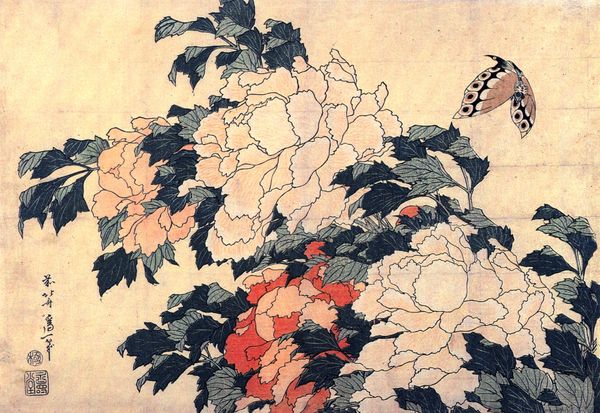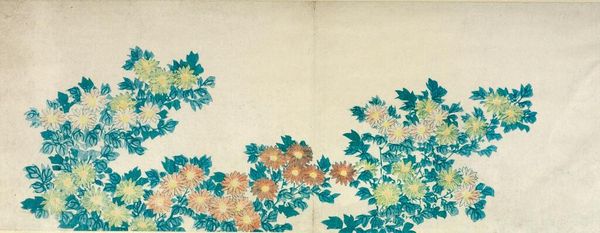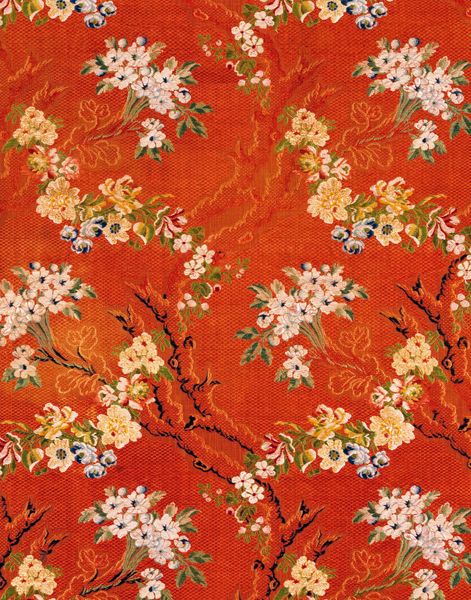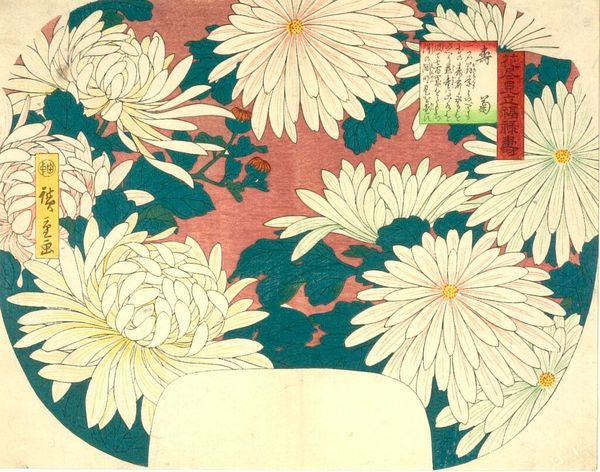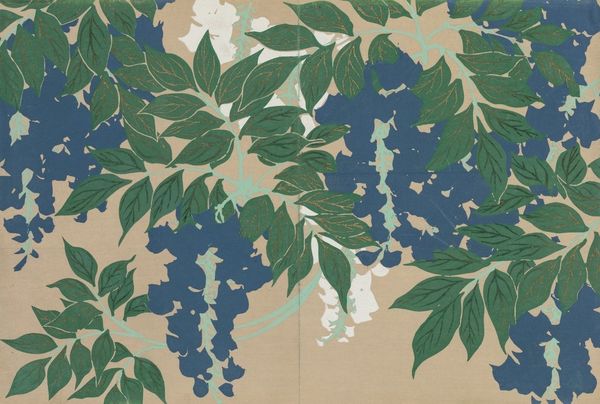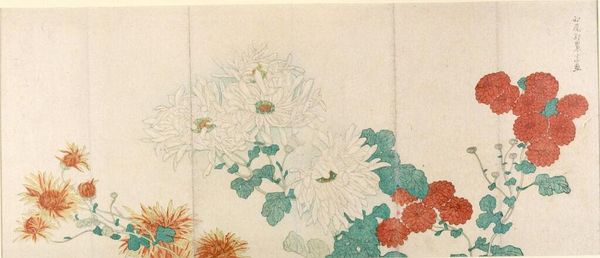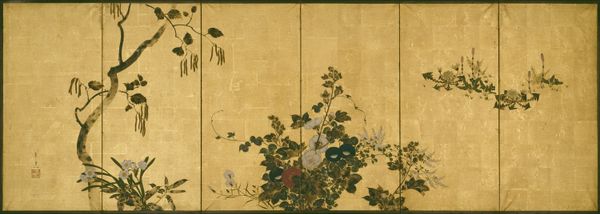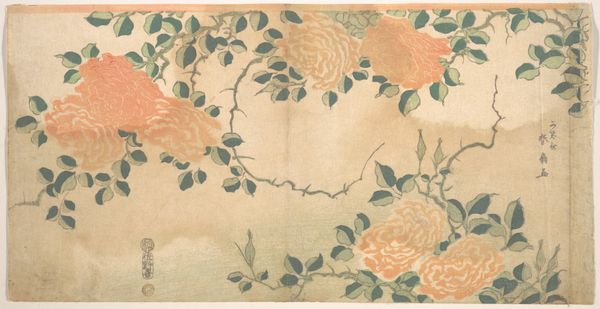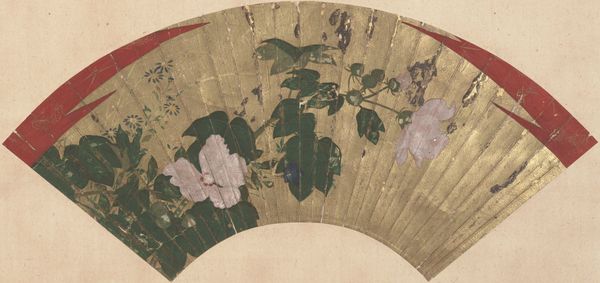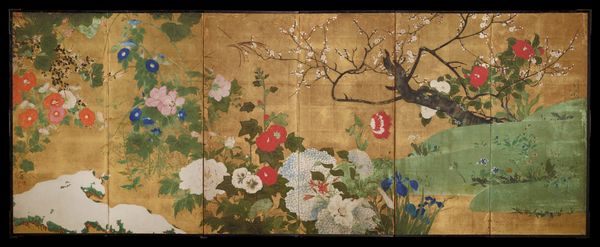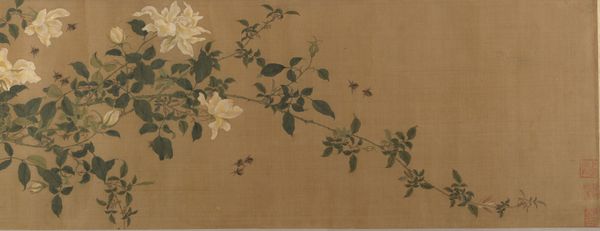
tempera, painting, textile, impasto
#
organic
#
tempera
#
painting
#
pattern
#
asian-art
#
landscape
#
textile
#
flower
#
ukiyo-e
#
animal print
#
text
#
impasto
#
organic pattern
#
plant
#
orientalism
#
botany
#
realism
Copyright: Public domain
Editor: So, we're looking at "Roses," also known as "Bara Shou Kin Zu," by Ito Jakuchu. The medium appears to be tempera on textile. What strikes me immediately is the incredibly dense, almost overwhelming composition of the flowers against that soft yellow background. It feels very…ornate. How do you interpret this work? Curator: The composition is indeed remarkable. Notice how the artist has arranged the roses not as individual entities, but as part of a complex visual network. The roses, leaves, and branches form a kind of all-over pattern. Can you discern a focal point? Is there a hierarchy within this visual field? Editor: I think my eye is drawn to the bird perched on the branch, but it feels almost incidental. The roses themselves are so dominant. I wouldn’t necessarily call them focal points in a conventional sense. It’s more like the entire surface is activated. Curator: Precisely. It's about the interplay of form and color, creating a sense of vibrant energy. Observe the detail in each petal and leaf, how Jakuchu used line and color to construct an ordered representation of reality. The arrangement does not reflect nature, but rather constructs a visual metaphor. Editor: I see what you mean. It is not merely a picture of roses. It’s almost a study in visual balance through the texture, form and composition. The eye is never at rest. It continues to wander. Curator: Indeed. The emphasis on visual complexity, with attention given to how forms interact and affect the viewers eye. What did you learn in examining Jakuchu’s method of rendering natural beauty? Editor: I’ve gained new insights, looking at form, color, and their relationship. Not only that, but that you can make beauty and visual complexity. Curator: A most worthwhile conclusion.
Comments
No comments
Be the first to comment and join the conversation on the ultimate creative platform.
